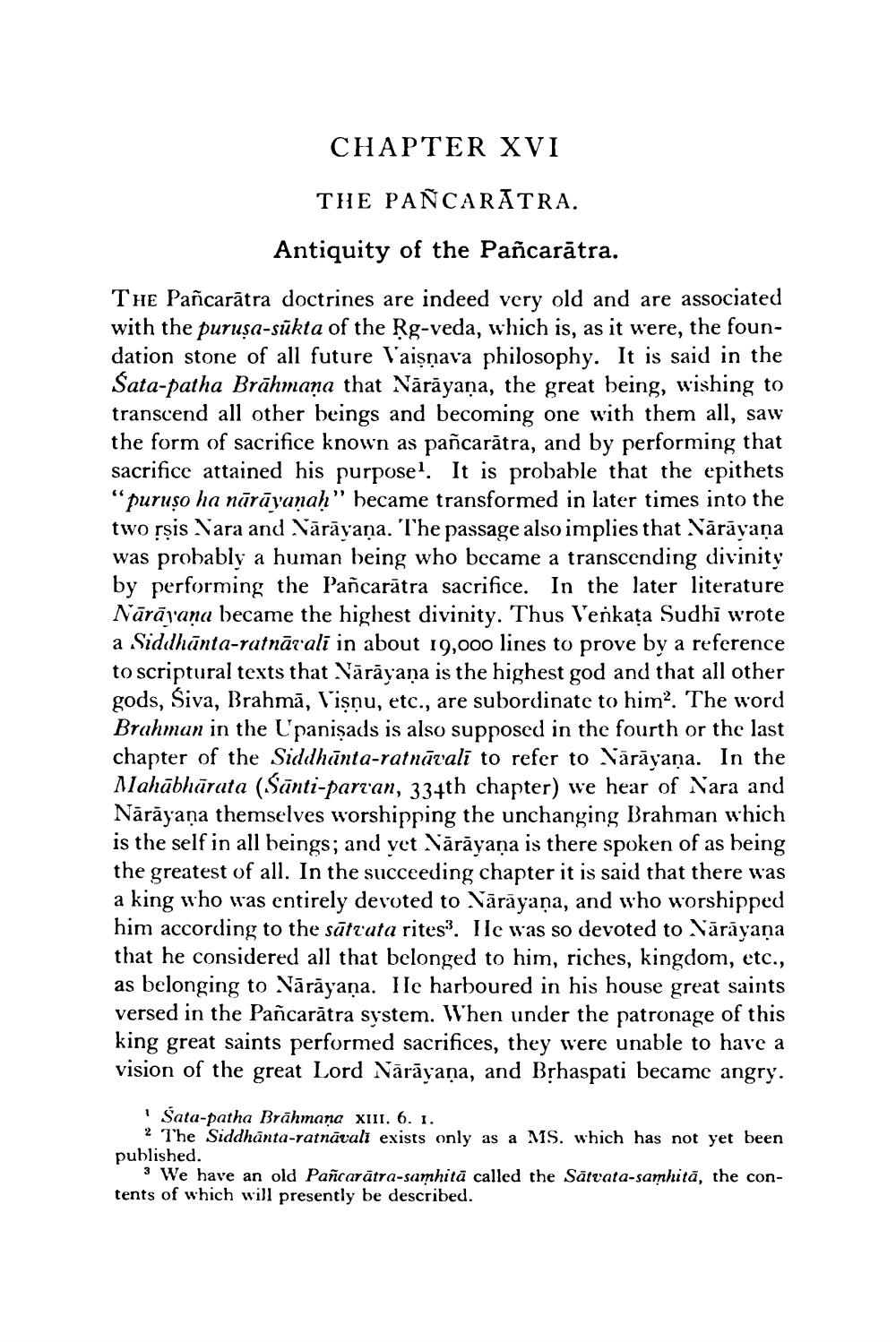________________
CHAPTER XVI
THE PAÑCARĀTRA.
Antiquity of the Pañcarātra.
The Pañcarātra doctrines are indeed very old and are associated with the purusa-sūkta of the Rg-veda, which is, as it were, the foundation stone of all future Vaisnava philosophy. It is said in the Sata-patha Brāhmana that Nārāyaṇa, the great being, wishing to transcend all other beings and becoming one with them all, saw the form of sacrifice known as pañcarātra, and by performing that sacrifice attained his purposel. It is probable that the epithets "puruṣo ha nārāyanaḥ" hecame transformed in later times into the two rșis Nara and Nārāyana. The passage also implies that Nārāyaṇa was probably a human being who became a transcending divinity by performing the Pancarātra sacrifice. In the later literature Nārāyana became the highest divinity. Thus Venkața Sudhi wrote a Siddhānta-ratnārali in about 19,000 lines to prove by a reference to scriptural texts that Vārāyana is the highest god and that all other gods, Siva, Brahmā, Vişnu, etc., are subordinate to him?. The word Brahman in the Cpanişads is also supposed in the fourth or the last chapter of the Siddhānta-ratnārali to refer to Nārāyaṇa. In the Mahābhārata (Šānti-partan, 334th chapter) we hear of Nara and Nārāyana themselves worshipping the unchanging Brahman which is the self in all beings; and vet Vārāyana is there spoken of as being the greatest of all. In the succeeding chapter it is said that there was a king who was entirely devoted to Nārāyaṇa, and who worshipped him according to the sātrata rites?. Ile was so devoted to Nārāyana that he considered all that belonged to him, riches, kingdom, etc., as belonging to Nārāyaṇa. Ile harboured in his house great saints versed in the Pancarātra system. When under the patronage of this king great saints performed sacrifices, they were unable to have a vision of the great Lord Nārāyaṇa, and Brhaspati became angry.
Sata-patha Brāhmana xur. 6. I. 2 The Siddhānta-ratnārali exists only as a MS. which has not yet been published.
3 We have an old Pañcarātra-samhită called the Sātrata-samhitā, the contents of which will presently be described.




